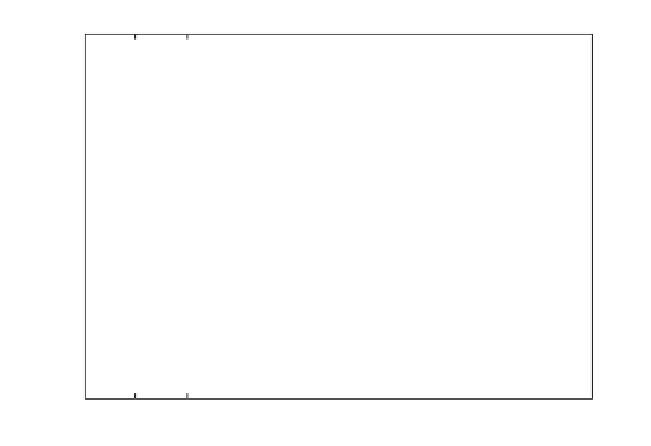Graphics Programs Reference
In-Depth Information
Note that
Ðghk_tracker.mÑ
uses MATLABÓs function
Ðnormrnd.mÑ
to gener-
ate zero mean Gaussian noise, which is part of MATLABÓs Statistics Toolbox.
If this toolbox is not available to the user, then
Ðghk_tracker.mÑ
function-call
must be modified to
[residual, estimate] = ghk_tracker1 (X0, smoocof, inp, npts, T)
which is also part of Listing 9.2. In this case, noise measurements are either to
be considered unavailable or are part of the position input array.
To illustrate how to use the functions
ghk_tracker.m
and
ghk_tracker1.m,
consider the inputs shown in
Figs. 9.22
and
9.23.
Fig. 9.22 assumes an input
with lazy maneuvering, while Fig. 9.23 assumes an aggressive maneuvering
case. For this purpose, the program called
Ðfig9_21.mÑ
was written. It is given
in Listing 9.3 in Section 9.11.
Figs. 9.24
and
9.25
s
how the residual error and predicted position corre-
sponding (generated using the program
Ðfig9_21.mÑ
) to Fig. 9.22 for two
cases: heavy smoothing and little smoothing with and without noise. The noise
is white Gaussian with zero mean and variance of .
Figs. 9. 26
and
9.27
show the residual error and predicted position corresponding (generated
using the program
Ðfig9_20.mÑ)
to Fig. 9.23 with and without noise.
σ
2
=
0.05
2.5
2
1.5
1
500
1000
1500
2000
2500
3000
3500
4000
4500
5000
Sam ple num ber
Figure 9.22. Position (truth-data); lazy maneuvering.













Search WWH ::

Custom Search